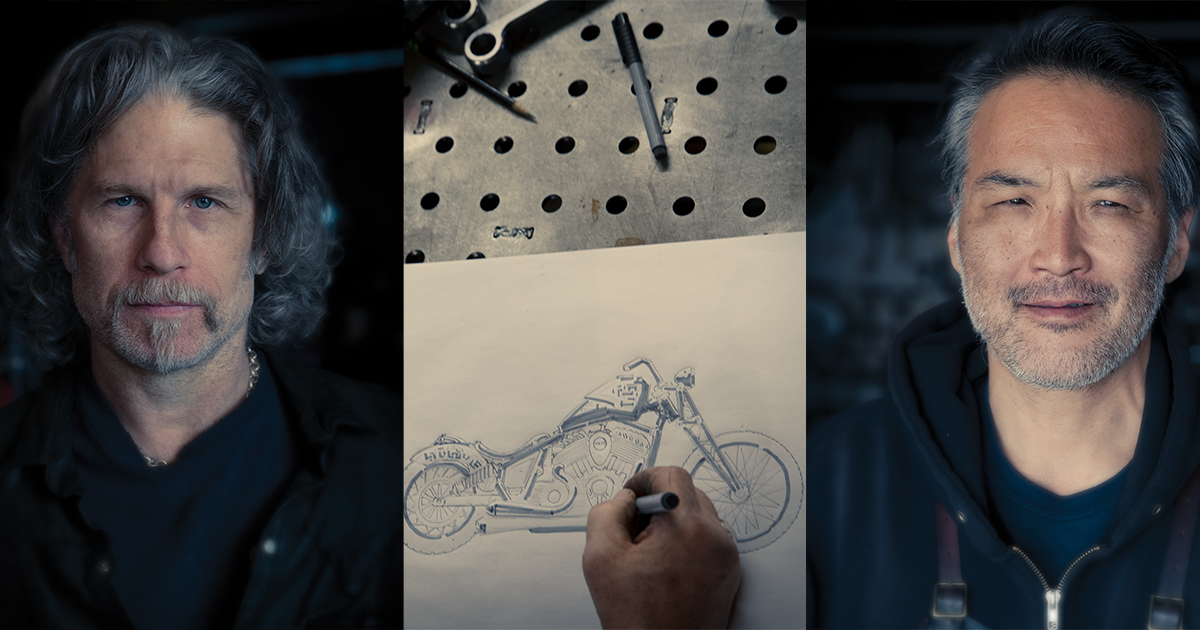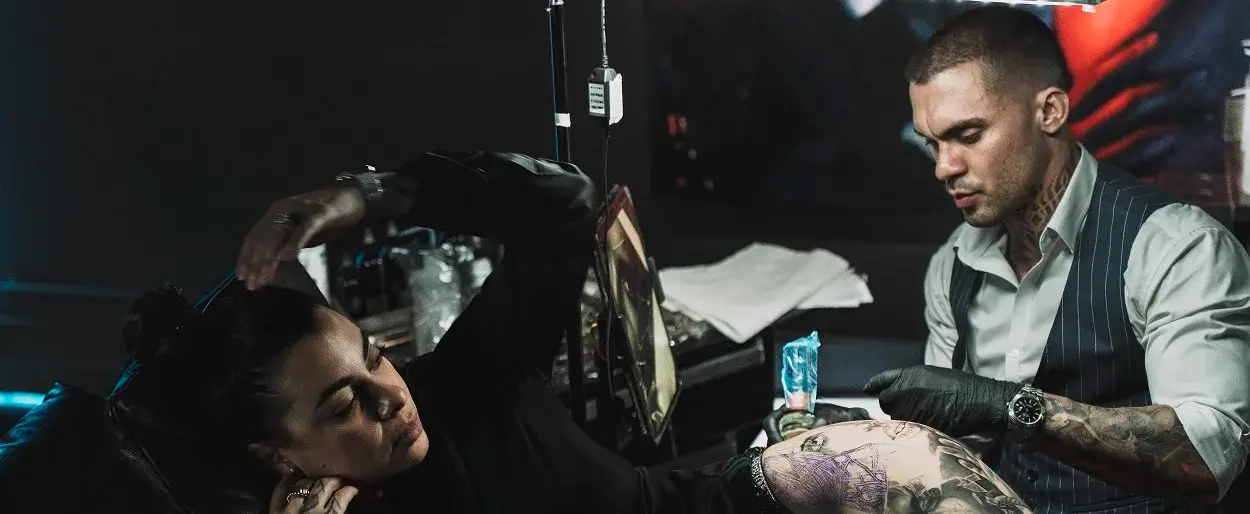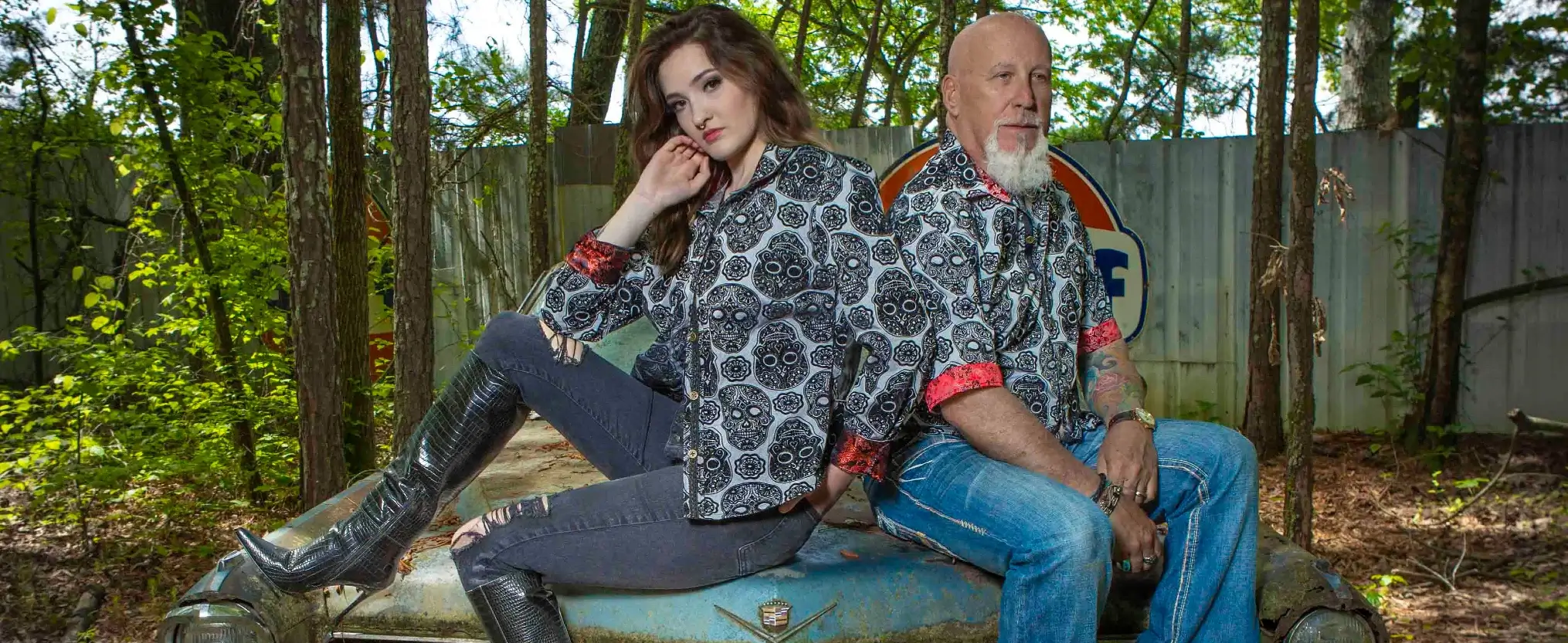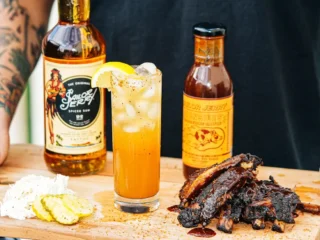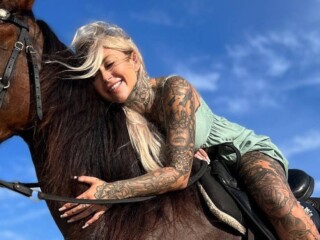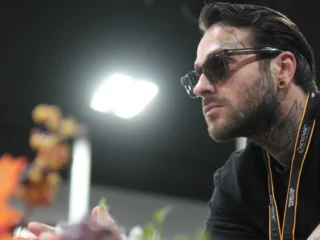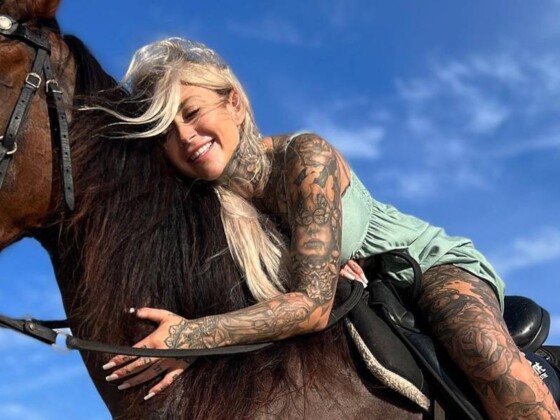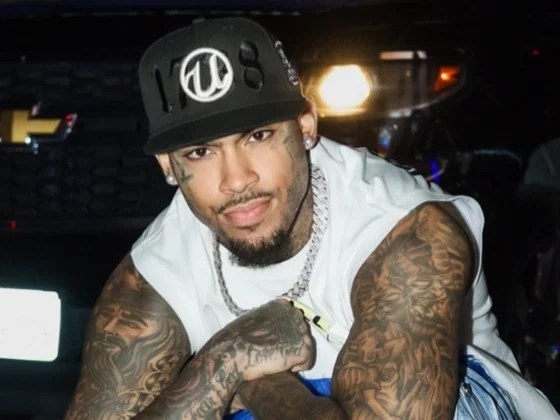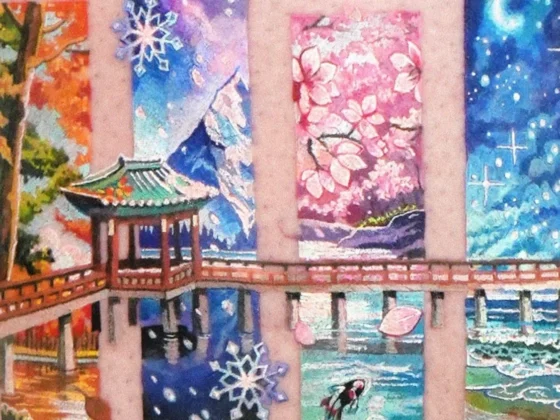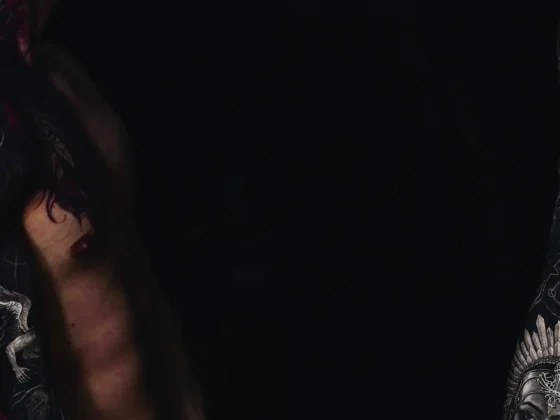Inked Mag Staff
July 20th, 2021
Building a Work of Art
To celebrate the release of the 2022 Indian Chief the legendary motorcycle company got together two of the world’s most sought after builders, Paul Cox and Keino Sasaki, to customize a bike for celebrated tattoo artist Nikko Hurtado.
Interview by Natalie Cuomo
Indian Motorcycle—the legendary brand that draws its lineage all the way back to the late 1800s—has recently come out with its most customizable bike ever. In order to celebrate the reimagined Indian Chief, the company reunited legendary builders Paul Cox and Keino Sasaki to custom build a bike for renowned tattoo artist Nikko Hurtado. We enlisted our resident bike expert Natalie Cuomo to moderate a conversation between the three heavy hitters. Over the course of an hour they discussed the 2022 Indian Chief, the similarities between tattooing and bike building, and much more.
Natalie Cuomo: Paul and Keino, you’re building this bike for Nikko. Can you give us a little background about how you came to work on this project?
Paul Cox: It was brought to both of us separately if we would be interested in working with Indian again, and then if we were interested in working with each other again, which both sounded like great ideas. We’ve been buddies for many years and it sounded like a lot of fun. This new 2022 Chief platform has been awesome to work with. The bike itself is such a departure from what they’ve been doing in recent years with the way it’s engineered and the way it’s built. We’re having a good time with it. We split up the project so that he [Keino] has his things he’s working on and I have my stuff that I’m working on, then we’ll just come together and make the whole thing come together.
Cuomo: How are you guys shaping this and how are you personalizing it specifically for Nikko?
Cox: Keino is going ahead and working on the gas tank and he’s building that up from scratch, as well as the exhaust system, which already looks awesome. I’m doing the front end from scratch, and we’re pairing down the whole wiring and infrastructure, the whole thing. We’re basically stripping it all down to a bare-bones sort of hot rod.
Cuomo: Nikko, what is your part in the process of this build?
Nikko Hurtado: I’m really excited about the bike. I super respect what you guys do. I grew up around fabrication and stuff like that, my father owns a fabrication shop in the San Fernando Valley and he’s done all kinds of stuff for aerospace. I grew up around metal… just the smell of it and the welds and stuff like that. I respect bike builders so much. My dad used to build bikes just for his friends and I have a bike that was built by hand, and I’m really excited to see what these guys pull off and put together, because, I mean, metal is in my blood. I have pictures of me when I was five years old pretending to weld. It’s so cool. To see these guys who have made their life around fabrication and customization, that’s their art form. It’s cool to be part of that.
Cox: Not for nothing, but your work is amazing.
Hurtado: Thank you so much, man.

Cuomo: I want to talk about the parallel in designing a tattoo and building a bike. You know, how you’re helping someone else express themselves, whether it’s through a tattoo or the bike they’re riding.
Hurtado: It’s kind of crazy seeing these guys on Zoom right now as I know how much heart and soul goes into anything you create, especially when it’s handmade. I could only imagine how they feel building something for Indian, the whole process. I always try to come in super respectful because [as a tattoo artist] I understand how you put your heart out into these pieces. No matter what it is you’re doing you try to do your best, because it’s part of your soul. When I see this bike in person for the first time, I’m sure it’s going to be overwhelming because it’s looking at somebody’s masterpiece.
Cox: One thing that I like about the combination of fine art and the mechanical aspect of bike building and engines is that you have to balance the two. There’s the technical aspect of engine building, bike geometry and everything else, but then you bring your fine art into it as far as style, aesthetic, flow and those details that are on the other end of the spectrum from the highly technical. Balancing those two is what makes me excited about getting up and doing what I do every day.
Cuomo: How much of the build would you say is inspired by the kind of classic, retro feel of the original Indian Chief versus a more modern take on it?
Cox: I feel great about it. I’m super excited about the whole geometry. Hey Keino, jump in someplace [laughs]. Any time.
Keino Sasaki: You’re really good with the wording, so I let you talk! We’re not chopping up the bikes, we’re using the platform and the Indian design and stylizing it with our ideas and our vision. It’s not necessarily that we’re making a tribute to the Indian history, but it’s Paul and I working together again. We worked together back in the day and moved on in our separate ways, but we still have a mutual respect for each other. It’s not that we’re inspired by one specific thing, but [we’re inspired] by what we’ve seen and what we tried over the years.
Cox: That’s a good point because we both have our own aesthetic and our own style of doing things over so many years. It’s very organic that once Keino and I started talking about what this platform looked like within the first five minutes we were picking it apart and deciding what it could be and how to bring it together. Each time is a challenge to create something new and unique but still in the style of what we do.
Sasaki: It’s like a tattoo. You come up with a design idea, but does it fit your body? Sometimes it doesn’t work out, it doesn’t look good, it’s a great idea but it’s a three-dimensional thing.

Cuomo: Nikko, can you speak a little about the crossover between the tattoo world and the motorcycle world?
Hurtado: When I first got into tattooing [the two worlds] were hand-in-hand. My first introduction to tattooing was going to a tattoo convention in Hollywood at the Palladium, it was run by a biker club. My cousin took me and there were tons of bikes and that’s just who was there. There were a bunch of people who rode bikes and they were getting tattooed. It was a bit of a circus. To me, what I miss [now] in tattooing is that raw feel. That old-school, circus feel. Tattooing has definitely changed.
I remember that old grittiness of tattoo magazines. I like looking at those old magazines, it gives me a piece of nostalgia. The guy that took me to the convention had full sleeves—I didn’t know anyone else who had full sleeves back then—and he was a biker. I just thought that was super cool and that started my infatuation with tattoos.
Cox: You ever come to the Roseland show here in the city? That was a good one, you talk about that circus feel. It was awesome.
Hurtado: You would see all those people, like the cat man and the puzzle guy and all those people, they would go to that one show. Now you don’t really see those people as often, or it’s that people just have their whole face tattooed now. Back then, man, it was crazy. It was a whole different time.
Sasaki: It’s normal to have a hand tattoo or a neck tattoo these days.
Hurtado: It’s normal to have your face tattooed now.
Sasaki: Yeah… that’s a little crazy to me. I would never do that [laughs].
Hurtado: I love it, though. Having sleeves back then was like what people are doing today by having a small face tattoo. And I’m cool with it. As long as people love bikes and love tattoos, I’ll be able to make a living. So I push everybody to keep getting those things. Who did your sleeve, Keino? That looks nice.
Sasaki: This is by Diego [Mannino], he just moved back to California. My chest was done by Troy Denning…
Hurtado: Yeah, I know Troy. Legend.
Sasaki: This Japanese guy, Takashi Matsuba, he’s a tebori hand tattoo guy, he’s working on my back. That’ll be it for me after I get my back done. Maybe my legs, maybe my ribs, but I’m not looking forward to doing a rib tattoo. When I did my chest and my butt, my God, it was so fucking painful. What am I doing this for? Especially in the back, I can’t even see it! Why am I doing this [laughs]?

Cuomo: Getting back to the bike, can you tell us a little about your relationship with Indian and what the company means to you?
Sasaki: For me, Indian was always the mysterious brand for me. I grew up working on Harleys and whatnot. When I started, Indian was a legendary brand, but it wasn’t in business at the time. When they brought it back to life it was pretty exciting to see what they could do with the modern platform while still carrying on that legacy of the Indian brand. I was fortunate enough to work on an Indian Scout five, six years ago and I didn’t even hesitate to work with such a legendary brand.
A few years later they came back with the idea to collaborate with my old partner, Paul, and I thought, “That’s a pretty cool twist.” Me and Paul talked about it and we jumped on. It’s such an honor.
Cox: Yeah, it feels like they’ve gone full circle. I like what they’re doing now more than a few years ago when they had an earlier rebirth of Indian before this one. What they’re doing now is so much cooler than what that was trying to be.
We’ve talked about the frame a lot, Keino and I have, even that element itself is beautifully engineered and thought out. It really speaks to the tradition of the old machines. It’s this tight little hot rod package with this beefy power plant. When you talk about modifications and making it your own, it’s intuitively designed to where it’s really been a pleasure to work with.
Sasaki: This time they have the right people behind the brand. From watching the whole motorcycle thing for the last 20, 30 years… they have the right people, the right company and the right motivations.
Cox: Yeah, they are motivated. They seem really in tune with what people want today, they’re listening to what people are saying. They’re thinking right off the bat about people wanting to beef up, tune and rework their existing models and really make them their own. Much more than just throwing on chrome mirrors. They’re thinking a little bit deeper into people, it’s been a blast.
Hurtado: I’m really excited to be painting another tank for them. I painted two tanks in the last few years for some charity events that we’ve had and I really enjoyed it. I had never really painted on anything metal before. I really enjoy the process behind it and I’m excited to be painting another tank for Indian. I’ve enjoyed watching the brand develop. Even the bike Carey [Hart] built recently… it was sick. I want to be a part of brands that I actually enjoy from now on. I really like the brand, I really like what they’re doing and I really like working with guys like yourselves.
Cox: Awesome. So, you ready for a jockey shift?
Hurtado: Yeah, man, I’ve never ridden one before so I’m excited.
Cox: That’s the right answer [laughs].
Sasaki: You ready for the death trap [laughs]? There’s no front brake, so be ready.
Hurtado: That’s OK. I’ve ridden with no rear brake, you know what I mean. My dad built me a bike, but all my friends when I first started tattooing had street bikes. I live on the 15 freeway in Hesperia, which is in the middle of the desert, and it’s a straight shot to Vegas. I had no experience riding bikes at the time. I could ride it, but I didn’t know you couldn’t push a Harley so hard. So my buddies take off on the 15 going 100, 110, whatever. I jumped on the freeway—I’m young, dude, probably early twenties—and I’m like, ‘Fuck, these dudes left me.’
I take off and I’m getting near Barstow, no joke, going probably 100 and the bike blew up because it was the middle of summer. The motor blows up as I’m driving and all I feel is nothing but hot on my legs, bro.
Cox: They were wet, right [laughing]?
Hurtado: I’m just dumping oil and my whole rear tire is covered in oil. So I threw it in neutral and coasted to the side, but that taught me to never be riding like that. You know, the little brain buckets back in the day, that’s all I had on. Man, it was crazy, I’m lucky to be OK now.
Everybody: [Laughing]
Thankfully everything worked out for the best that day in the desert. Not only did Nikko avoid any sort of catastrophe, but he learned a lesson about riding and deepened his love of motorcycle culture. Soon he’ll be able to recreate that desert run on his marvelous Indian bike built by Cox and Sasaki, only this time around we can guarantee he’ll make it to Vegas and come away with more than just a cautionary tale.

Editor's Picks
Bridging Classical Art and Modern Tattooing
Esteban Rodriguez brings the discipline of classical fine art to the living canvas of skin, creating hyper-realistic tattoos that merge technical mastery with emotional depth.
Show Your Ink Fashions Brings Custom Style to Tattoo Culture
Show Your Ink Fashions creates custom shirts designed to showcase your tattoos as wearable art, blending fashion with personal expression.
The Ultimate “Superman” Tattoo Roundup: Just in Time for Superman’s Return to Screens
With Superman’s big return to theaters, fans are revisiting some of the most iconic ink inspired by the Man of Steel.

